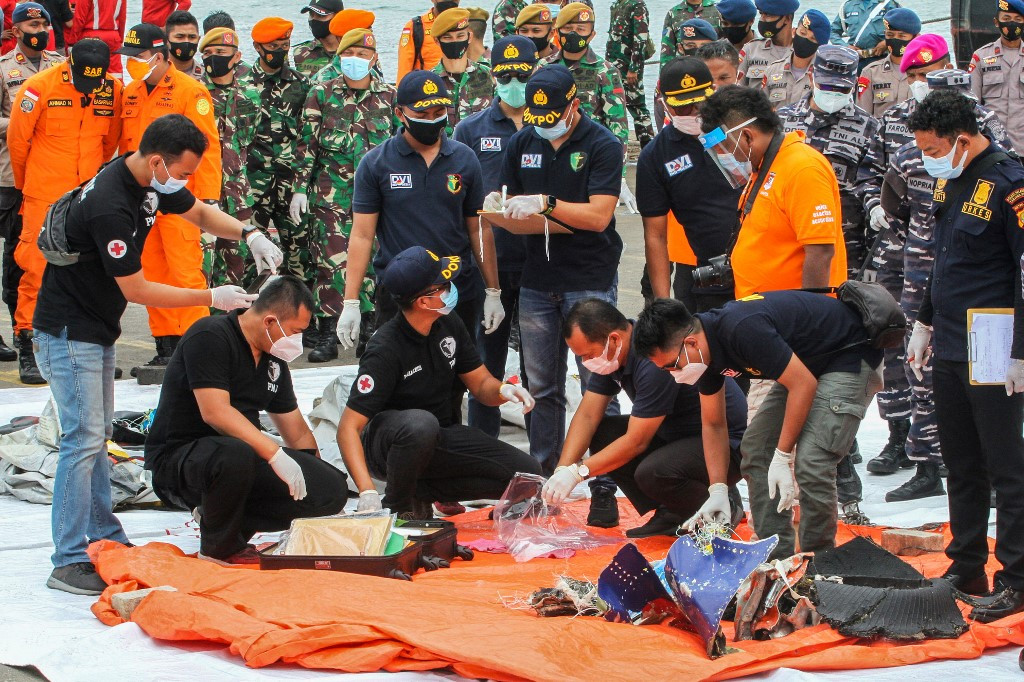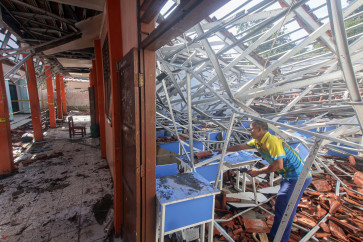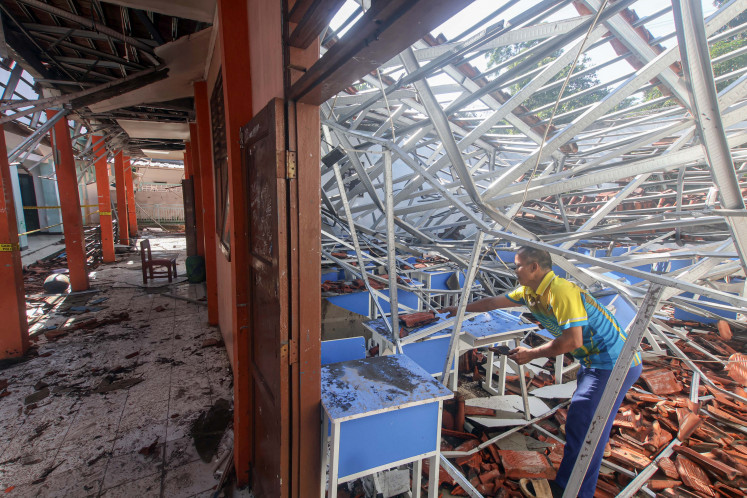Popular Reads
Top Results
Can't find what you're looking for?
View all search resultsPopular Reads
Top Results
Can't find what you're looking for?
View all search resultsFlight system of crashed Sriwijaya Air jet functioning during impact
Data of Sriwijaya Air Flight 182 that had been recorded until the plane descended to 250 feet (76.3 meters) above the water's surface before the crash on Saturday have "indicated that the flight system was functioning and able to send data," according to Soerjanto Tjahjono, chief of the National Transportation Safety Commission.
Change text size
Gift Premium Articles
to Anyone
A
n early investigation by the National Transportation Safety Commission (KNKT) showed Tuesday that the flight system of a Boeing 737-500 jetliner with 62 people on board that crashed in the sea off Jakarta was functioning during the impact.
Data of Sriwijaya Air Flight 182 that had been recorded until the plane descended to 250 feet (76.3 meters) above the water's surface before the crash on Saturday have "indicated that the flight system was functioning and able to send data," according to Soerjanto Tjahjono, chief of the KNKT.
"Based on this, we suspect that the engines were still working just before it crashed into the sea," he added.
The safety board chief also said field data have shown the pieces of the plane's wreckage found by rescuers only covered a 40-square-kilometer area, supporting "our hypothesis that the plane didn't explode when touching the water."
The aircraft took off from Jakarta's Sukarno-Hatta International Airport at 2:36 p.m. Saturday, heading to the West Kalimantan provincial capital of Pontianak, and a minute later requested to ascend to 29,000 feet.
However, at 2:40 p.m. air traffic control asked the pilot why the plane was heading northwest instead of on its expected path. A few seconds later, it disappeared from radar.
Flight tracking website Flightradar24 showed that after taking off, the plane climbed to 10,900 feet in approximately four minutes, but then went into a steep descent over the next 21 seconds, with the last received data placing it at 250 feet from the water's surface.
The preliminary findings were issued as the search for victims and wreckage of the aircraft continued on the fourth day, focusing on a 90-sq.-meter area where a locator beacon has caught signals from flight data recorders, believed to be buried under the plane's debris.
On Tuesday, about 3,600 rescuers, 13 planes and 54 ships were deployed to recover human remains believed to be those of the plane's passengers as well as suspected debris from the aircraft.
"Today, it will be cloudy with waves up to 1 meter in height. Hopefully, the weather will be friendly, so all of our personnel can do their job well to maximize their search and rescue efforts," said Brig. Gen. Rasman, operational director of the National Search and Rescue Agency, who like many Indonesians goes by a single name.
So far, no survivors have been found.
Among the 62 people on board the plane were 10 children, including three infants, and 12 crew members. All were Indonesians.
Established in 2003, Sriwijaya Air is the country's third-largest airline and is regarded as having a good safety record. Before Saturday's crash, it had been involved in five minor incidents, none resulting in casualties.
The crash was the second involving a B-737 aircraft in Indonesia in recent years. In October 2018, a B-737 MAX 8 operated by low-cost carrier Lion Air crashed off the northeast coast of Jakarta immediately after takeoff, killing all 189 passengers and crew.
The Lion Air incident, along with another involving an Ethiopian Airlines aircraft in 2019, caused the grounding of B-737 MAX airliners. The B-737-500 model involved in Saturday's crash was an earlier generation not affected by the grounding.










